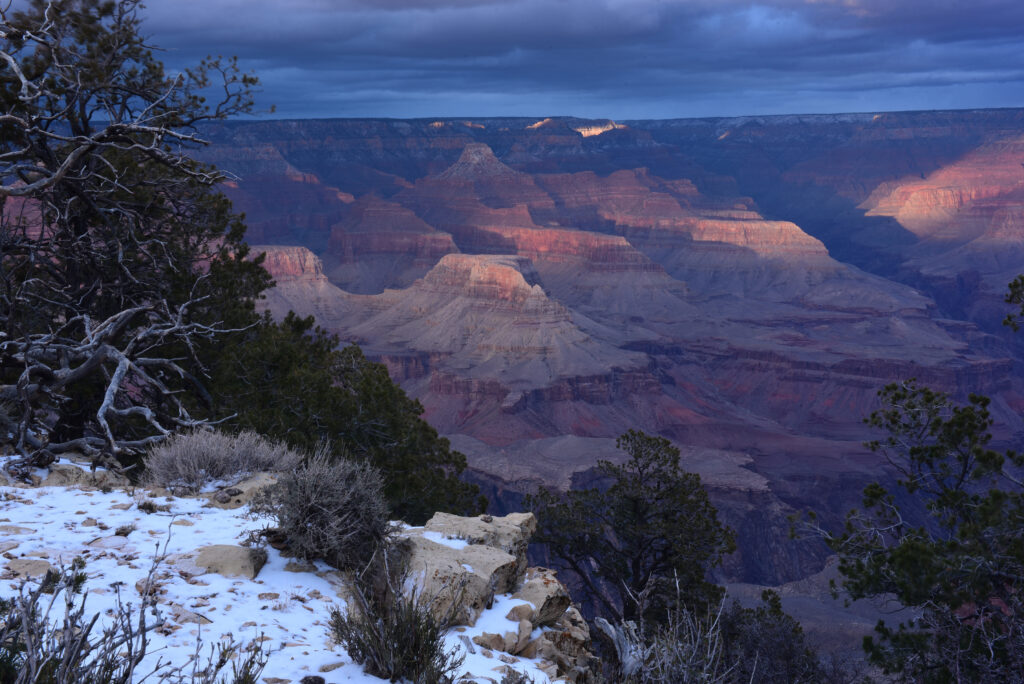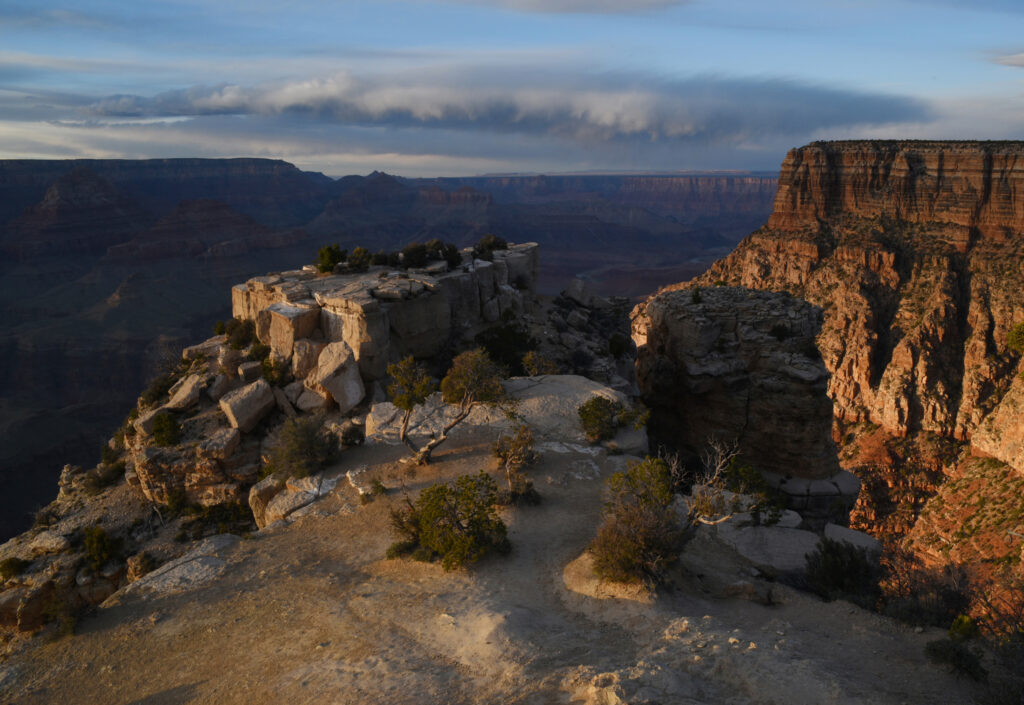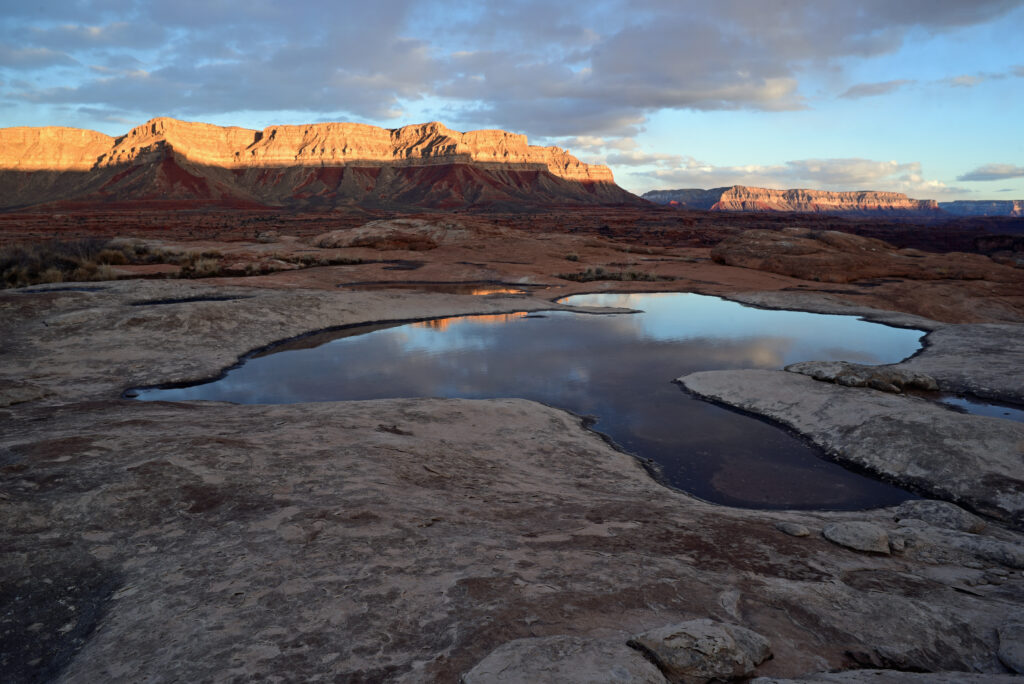
Things never really change, do they? Take the Grand Canyon, for example. A century ago, the canyon looked much the same as it did today, with its red cliffs, its pink sunsets, its gathering storms, its grifters on the Rim, looking for a way to make a fast buck.
Ralph Cameron has gone down in history as the greedy bastard who would stop at nothing to profiteer off the Canyon’s beauty, but he was not alone. Cameron complained to all who would listen that he was a small businessman, butting heads with the railroads and the Fred Harvey Company, corporate interests that had gained the inside track with government agencies. Many things can be true at the same time – corporate interests did have the inside track. Had Cameron stayed in the hotel business, he may have cut a more sympathetic figure. But he kept chasing something bigger than himself, and it was not the Canyon’s beauty.
Americans were slow to appreciate the Canyon. In How the Canyon Became Grand, Stephen Pyne writes that when the Spanish came across the Big Ditch, they found a tangle of canyon and mesas, with a big river they could see but not reach, “not a presence so much as an absence, a place to be avoided. And so it was.” They were followed by trappers such as James O. Pattie, who emerged from the canyon’s “horrid mountains” after a couple of weeks of wandering, and Joseph Ives, who led a party into the Canyon and predicted they would be the last Americans to see it.

Man can only mar it
By the time the Theodore Roosevelt stood on the rim and implored Americans to leave the Canyon alone, because “man can only mar it,” the machinery of industry was already at work.
John Hance had built a cabin near Grandview Point on the South Rim in 1884 to look for gold, silver and asbestos. Others, such as Pete Berry, Bill Bass and Martin Buggeln operated mines or hotels to accommodate the stream of visitors that had begun to make its way to the Canyon.
Cameron was among these pioneers. He wandered the overlooks shortly after his arrival to Arizona in 1883, then began to search the inner gorge for riches, laying claim to ground that would allow him to control access to the Big Ditch, Douglas H. Strong writes in Arizona and the West. He was one of the first to open a hotel on the South Rim, putting him in competition with Grand Canyon Railroad and its successor, the Grand Canyon Railway, which dropped off tourists near the Fred Harvey property.
As the first automobile tourists began pouring into the Canyon, the South Rim grew into a free-for-all, with trash heaps, pit toilets, open-air incinerators and livestock. Cameron’s property at Indian Garden had become an “eyesore for lack of maintenance,” Michael F. Anderson writes in Polishing the Jewel. As the government searched for ways to protect the Canyon, management passed from the Forest Service to the newly created National Park Service. The agency created to corporate monopolies to accommodate the influx of travelers so it could turn its attention to other things.
And although small operators complained about the government crushing their rights as businessman, in time they sold out moved on.

Cameron presses on
But Cameron continued to spar with his rivals – in court and the political arena. He searched for way to make money off of mining claims that had no value that sat on land he didn’t own. He tried to control the Bright Angel Trail as a toll road, which he claimed to own rights to because it offered access to his “mines.” The mining act of 1872 gave prospectors a great deal of leeway when it came to seizing public lands as long as their mines produced. Cameron’s mines were worthless. For a time he worked on a hydropower scheme. He got into politics and eventually became a senator, which allowed him to push his agenda from Washington. But he could never find the foothold he was looking for, and one scheme after another failed.
Over the years he was accused of salting one of his mines, indicted by a federal grand jury over campaign finance funds and charged with contempt of court. In a series of stories in the Los Angeles Times, Arizonans learned that he tried to use his influence to make indictments go away. When he ran for re-election, his persecuted businessman act had worn thin. Voters tossed him out of office.
Roosevelt’s legacy, and Cameron’s
Roosevelt’s words have endured because they were so true: Man can only mar the Canyon. Hold them in a certain light and you can see wisdom, an obligation to future generations; in another light, irony, because leaving it alone was not an option once visitors started to pour in. In time, his words also carried a hint of tragedy, as a steady stream of visitors brings with it a flow of money and a caravan of grifters.
Today the Park Service is surrounded by threats – a stream of helicopter tours from Las Vegas, plans for a major development on the South Rim, uranium mines at its borders. And although a proposed tramway on Navajo land failed to gain approval, conservationists fear that the idea is out there and will never really go away. Roosevelt helped lay the groundwork for conservation with his message from the Rim. Cameron laid the groundwork for something else.